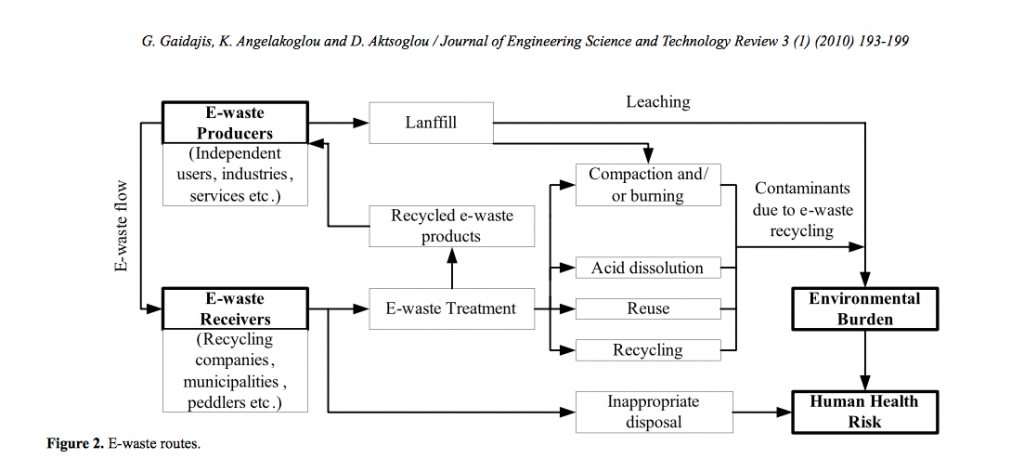Impacts on the Environment
Electronic waste: Air pollution & Loading on landfill resources
Due to the high levels of consumption of electronic hardware, Singapore also disposes a lot of its old electronic hardware, generating large amounts of electronic waste (e-waste). According to the National Environment Agency (NEA), about 60,000 tonnes of such e-waste is generated every year (National Environment Agency, 2016). E-waste usually contains several metal alloys, covered or mixed with several plastics or ceramics. Large amounts of pollutants are released in landfills or recycling centres in the disposal of e-waste. For example, metals, halogenated compounds, and other substances (Gaidajis, Angelakoglou, & Aktsoglou, 2010).
Even when recycled, e-waste releases harmful substances such as greenhouse gases, due to processes such as melting circuit boards and burning cable sheathing.
When incinerated, e-waste also release many toxic compounds that pollute the air, damaging to the environment and the health of animals and humans. Furthermore, they add to the load on the limited space of landfills. In Singapore, it would deplete the precious limited space of our only landfill left – Pulau Semakau.


